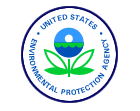
| National Risk Management Research Laboratory | ||

|
|
|||||||||
|
SITE-EMERGING TECHNOLOGIES: REMOVAL AND RECOVERY OF METAL IONS FROM GROUNDWATER This document is available in the Adobe Acrobat PDF Format.Click here for information about Portable Document File (PDF) Formats. orClick here to directly download the Acrobat Reader. (To view the PDF, it is recommended that you use the latest version of Acrobat Reader.)
SITE-EMERGING TECHNOLOGIES: REMOVAL AND RECOVERY OF METAL IONS FROM GROUNDWATER(2.95MB)
Abstract The AlgaSORBTM sorption process is designed to remove heavy metal ions from aqueous solutions. The process is based on the natural affinity of the cell walls of algae for heavy metal ions. The system functions as a biological ion-exchange resin to bind both metallic cations and metallic oxoanions. After the media are saturated, the metals are stripped from the algae by using acids, bases, or other suitable reagents. This produces a small volume of solution containing highly concentrated metals that must undergo future treatment. The technology is useful for removing metal ions from groundwater or surface leachates that contain high levels of dissolved solids. Rinse waters from electroplating, metal finishing, and printed circuit board manufacturing industries can also be treated. The system can remove metals such as aluminum, cadmium, chromium, cobalt, copper, gold, iron, lead, manganese, mercury, molybdenum, nickel, platinum, silver, uranium, vanadium, and zinc. The process was tested on mercury contaminated groundwater at a hazardous waste site in Oakland, California to determine optimum flow rates, binding capacities, and the efficiency of stripping agents. The process is being commercialized for groundwater treatment and industrial point source treatment.
Posted July 12, 1999
|
|
|
|
|
|